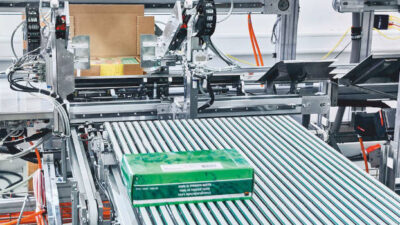Many manufacturers have hesitated to adopt green initiatives out of fear that it would raise production costs. Nabil Nasr, director of the Center for Integrated Manufacturing Studies at the Rochester Institute of Technology, is among the experts who say that fear can be alleviated by injecting the right technology into the manufacturing process.
For Harry Brix, director of procurement at Syosset, N.Y.-based Paradigm Group , a supplier of janitorial and sanitary products, green manufacturing is “very chic”, but he wonders if will ever be more than a passing fad. Brix says green strategies emerged in the 1970s, but interest waned, only to surface again in the‘90s, and wane again.
Many believe this time the green manufacturing movement is here to stay—namely Nabil Nasr, Ph.D., director of the Center for Integrated Manufacturing Studies at the Rochester Institute of Technology.
“There is very serious interest from industry surrounding green manufacturing,” says Nasr. “We are starting to see the shift in philosophy, acceptance, and emphasis.”
But an interest in green manufacturing doesn’t necessarily translate into a commitment to making the necessary changes, as documented in a recent survey of manufacturers conducted by U.K.-based Lanner Group , a business process analysis organization. The survey found only 9 percent of respondents prioritized reduction of their carbon footprint in 2007. When asked why, 72 percent of the respondents said they had other priorities to address first, 15 percent said the process is too costly, and 8 percent said they didn’t know how to do it.
Such a mind-set disturbs Nasr. “There is a belief among some manufacturers that green manufacturing costs money,” he says, “so they wait until they have extra money to cover the expenses. This is absolutely wrong!” In fact, says Nasr, with proper training in information technology and usage, manufacturers can identify tremendous opportunities without incurring any costs. “These initiatives offer competitive market advantages,” he says.
Ralph Bianculli, president and CEO of Paradigm Group, agrees. “Historically, one problem with green products is they’re quite a bit more expensive than traditional products, so it was difficult to create a market for them,” he recalls. More recently, though, manufacturers that have invested money in greener production processes have been able to cut the cost of their green products.
One strategy, says Bianculli, is retooling near the end of the manufacturing line. “This allows recapturing some of the product and recycling some of its content,” he explains.
Nasr sees other ways in which technology can aid the transition to green manufacturing. “It’s necessary to take a system wide view,” he explains.
“Green manufacturing cuts across every aspect of manufacturing, including information decisions, process technologies, energy consumption, material selection, and material flow. A lot of the decisions manufacturers make are related to cost, function, and quality. Now they are adding another dimension, which is sustainability.”
There are a number of technologies that can prove useful, Nasr adds, and they vary across industries. Some sectors are interested in technologies that eliminate lead, and those that recover material from the product during processing. In the automotive industry, the focus is on technology that can reduce emissions, as well as finding replacement materials that improve conservation efforts.
According to Lanner Group, another useful tool is simulation technology. In fact, 90 percent of Lanner’s survey respondents say if its potential is maximized, simulation technology can facilitate greener manufacturing.
Simulation has application in new plant design/layout, capital equipment evaluation/justification, new process design, resource planning, and material delivery logistics. “Using simulation to improve business processes is as close to guaranteeing an outcome as is possible,” states David Jones, CEO of Lanner. “It can provide visibility and clarity, and eliminate unforeseen costs that are common in new projects. Effective use of simulationtechnology can map processes so that environmental initiatives can be aligned with cost savings.”



